Waterless Tomato Growing: Sounds like something out of a sci-fi movie, right? But trust me, it’s not only possible, it’s surprisingly easy! Imagine sinking your teeth into a juicy, sun-ripened tomato that you grew yourself, all without constantly lugging around watering cans or worrying about drought conditions. For centuries, humans have toiled, watering their crops, but what if I told you there’s a smarter, more sustainable way, especially for those delicious tomatoes?
The concept of minimizing water usage in agriculture isn’t new. Indigenous cultures around the world have long practiced dry farming techniques, adapting to arid climates and maximizing every drop of precious water. Now, with increasing concerns about water conservation and climate change, these methods are becoming more relevant than ever.
Are you tired of battling inconsistent watering schedules, struggling with water restrictions, or simply wanting to reduce your environmental footprint? Then this DIY guide is for you! I’m going to share some simple yet effective tricks and hacks that will allow you to achieve successful waterless tomato growing. Get ready to unlock the secrets to thriving tomatoes with minimal water – your garden (and the planet) will thank you!
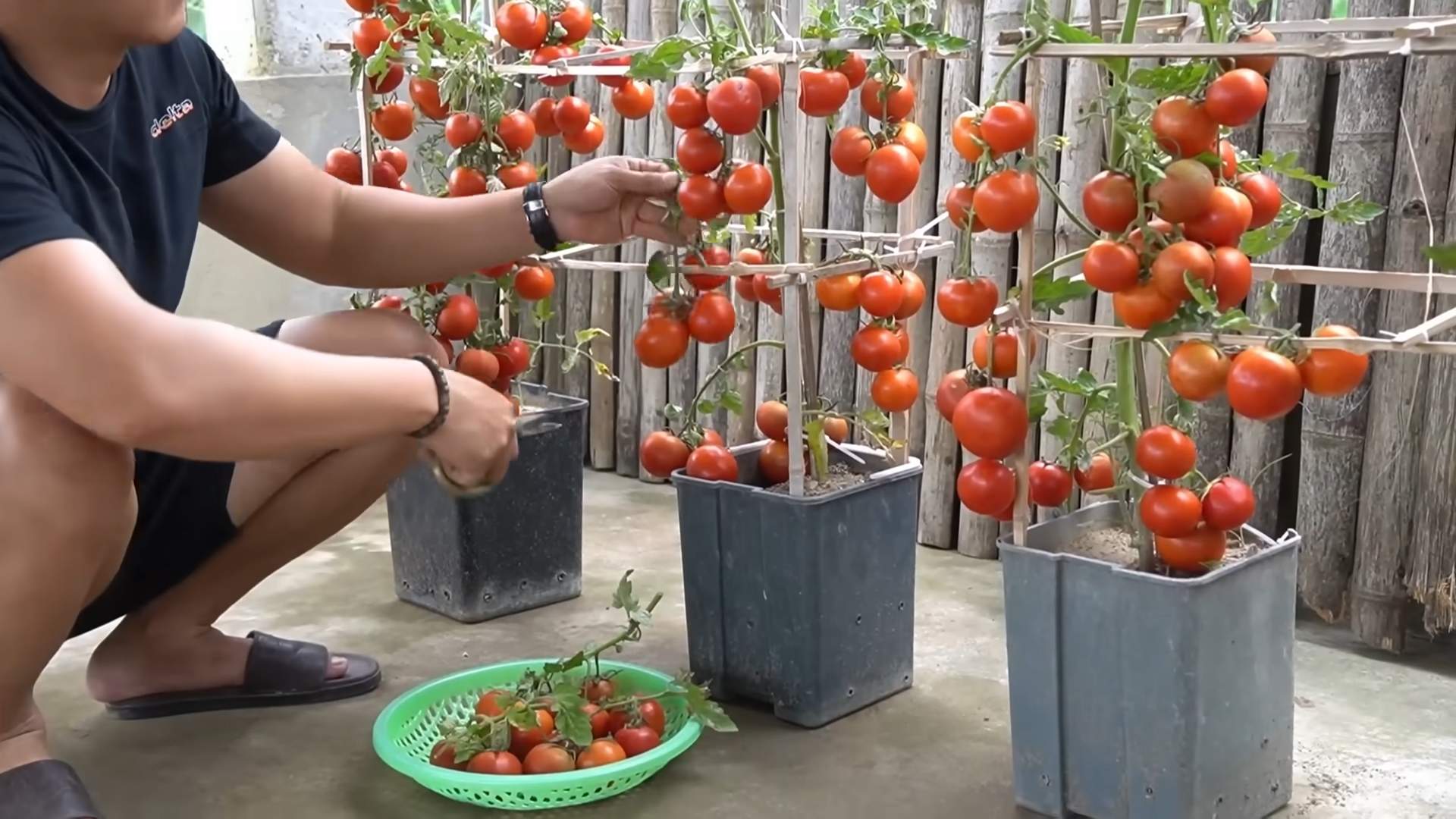
DIY Waterless Tomato Growing: A Guide to Self-Sufficient Gardening
Hey there, fellow gardening enthusiasts! Are you tired of constantly watering your tomato plants, especially during those scorching summer months? Do you dream of a garden that practically takes care of itself? Well, you’ve come to the right place! I’m going to share my tried-and-true method for growing delicious, juicy tomatoes with minimal watering – sometimes even *no* watering after the initial planting! This technique, often called “waterless tomato growing,” focuses on creating a self-sustaining environment for your plants, allowing them to thrive even in dry conditions.
Understanding the Waterless Tomato Growing Philosophy
Before we dive into the nitty-gritty, let’s understand the core principles behind this method. It’s all about:
* Soil Preparation: Creating a rich, moisture-retentive soil base is absolutely crucial. We’re talking about amending your soil with lots of organic matter.
* Deep Planting: Burying a significant portion of the tomato stem encourages root growth along the buried stem, leading to a more extensive root system that can access water deeper in the soil.
* Mulching: A thick layer of mulch acts as a barrier, preventing water evaporation from the soil surface and suppressing weeds.
* Choosing the Right Varieties: Some tomato varieties are naturally more drought-tolerant than others.
* Strategic Watering (Initially): While the goal is waterless growing, we need to provide adequate water during the initial establishment phase.
Materials You’ll Need
* Tomato seedlings (drought-tolerant varieties are recommended, such as Roma, San Marzano, or Celebrity)
* Shovel or garden fork
* Gardening gloves
* Compost (lots of it!)
* Well-rotted manure (optional, but highly beneficial)
* Straw, hay, wood chips, or other organic mulch
* Watering can or hose
* Optional: Mycorrhizal fungi inoculant (to boost root development)
* Optional: Tomato cages or stakes
Step-by-Step Guide to Waterless Tomato Growing
Alright, let’s get our hands dirty! Here’s how I set up my waterless tomato garden:
Phase 1: Soil Preparation – The Foundation for Success
This is arguably the most important step. A well-prepared soil is the key to waterless tomato growing.
1. Choose Your Location: Select a sunny spot in your garden that receives at least 6-8 hours of direct sunlight per day. Tomatoes are sun-loving plants!
2. Dig a Generous Hole: Dig a hole that’s much larger than you would for a typical tomato plant. I usually aim for a hole that’s about 18-24 inches wide and 18-24 inches deep. This gives the roots plenty of room to spread out.
3. Amend the Soil: This is where the magic happens. Remove the soil you dug out and mix it thoroughly with a generous amount of compost and well-rotted manure (if using). I aim for a 50/50 mix of native soil and organic matter. The more organic matter, the better the water retention and nutrient availability.
4. Optional: Mycorrhizal Fungi: At this stage, I like to sprinkle some mycorrhizal fungi inoculant into the hole. These beneficial fungi form a symbiotic relationship with the tomato roots, helping them absorb water and nutrients more efficiently. It’s like giving your plants a super boost!
5. Refill the Hole (Partially): Fill the hole back up with the amended soil, leaving enough space for deep planting.
Phase 2: Deep Planting – Encouraging a Strong Root System
Deep planting is crucial for developing a robust root system that can access water deep in the soil.
1. Remove Lower Leaves: Gently remove the lower leaves from your tomato seedling, leaving only the top few sets of leaves. This will allow you to bury a significant portion of the stem.
2. Plant Deep: Place the tomato seedling into the hole, burying the stem up to the first set of leaves. The buried stem will develop roots, creating a larger and more efficient root system.
3. Backfill Carefully: Gently backfill the hole with the amended soil, making sure to support the plant as you go.
4. Water Thoroughly: After planting, water the tomato plant thoroughly. This helps settle the soil around the roots and gets the plant off to a good start.
Phase 3: Mulching – Locking in Moisture and Suppressing Weeds
Mulching is essential for preventing water evaporation and keeping weeds at bay.
1. Apply a Thick Layer of Mulch: Spread a thick layer of organic mulch (straw, hay, wood chips, etc.) around the base of the tomato plant. I aim for a layer that’s about 4-6 inches thick. Make sure the mulch doesn’t touch the stem of the plant to prevent rot.
2. Extend the Mulch: Extend the mulch out several feet around the plant to cover as much of the soil surface as possible. This will maximize water retention and weed suppression.
Phase 4: Initial Watering and Monitoring – Getting Established
While the goal is waterless growing, we need to provide adequate water during the initial establishment phase.
1. Water Regularly (Initially): For the first few weeks after planting, water the tomato plants regularly, especially during hot or dry weather. I usually water every 2-3 days, or whenever the top inch of soil feels dry.
2. Monitor Plant Health: Keep a close eye on your tomato plants for signs of stress, such as wilting or yellowing leaves. If you see these signs, water the plants immediately.
3. Gradually Reduce Watering: As the plants become established, gradually reduce the frequency of watering. The goal is to encourage the roots to grow deeper in search of water.
4. Observe the Weather: Pay attention to the weather forecast. If there’s a prolonged period of drought, you may need to provide supplemental watering.
Phase 5: Ongoing Care – Supporting Healthy Growth
Even with waterless growing, your tomato plants will still need some basic care.
1. Provide Support: As the tomato plants grow, they will need support to prevent the stems from breaking under the weight of the fruit. Use tomato cages or stakes to provide support.
2. Prune Regularly: Prune the tomato plants regularly to remove suckers (the small shoots that grow between the main stem and the branches). This will improve air circulation and prevent disease.
3. Fertilize (Optional): If you notice that your tomato plants are not growing vigorously, you can fertilize them with a balanced organic fertilizer. However, with well-amended soil, fertilization may not be necessary.
4. Pest and Disease Control: Keep an eye out for pests and diseases. Take action promptly to prevent them from spreading. Organic pest control methods are always preferred.
Choosing the Right Tomato Varieties
While this method works well for many tomato varieties, some are naturally more drought-tolerant than others. Here are a few of my favorites:
* Roma: A classic paste tomato that’s known for its drought tolerance and disease resistance.
* San Marzano: Another excellent paste tomato with similar characteristics to Roma.
* Celebrity: A popular hybrid tomato that’s known for its high yields and adaptability.
* Mortgage Lifter: An heirloom tomato that’s surprisingly drought-tolerant and produces large, meaty fruits.
* Black Krim: An heirloom tomato with a unique flavor and good drought tolerance.
Troubleshooting Tips
Even with the best preparation, you may encounter some challenges along the way. Here are a few troubleshooting tips:
* Wilting Leaves: If your tomato plants are wilting, even after watering, it could be a sign of root rot. Make sure the soil is well-draining and avoid overwatering.
* Yellowing Leaves: Yellowing leaves can be a sign of nutrient deficiency. Amend the soil with compost or fertilizer.
* Blossom End Rot: Blossom end rot is caused by a calcium deficiency. Ensure consistent watering (especially during fruit development) and amend the soil with calcium-rich amendments like bone meal.
* Pests and Diseases: Regularly inspect your plants for pests and diseases. Take action promptly to prevent them from spreading.
Why This Method Works
The beauty of this method lies in its simplicity and effectiveness. By focusing on soil preparation, deep planting, and mulching, we create an environment where tomato plants can thrive with minimal watering. The deep planting encourages a strong root system that can access water deep in the soil, while the mulch prevents water evaporation and suppresses weeds. The result is a self-sufficient garden that requires less maintenance and produces delicious, juicy tomatoes.
So, there you have it! My guide to waterless tomato growing. Give it a try, and I’m confident you’ll be amazed at the results. Happy gardening!
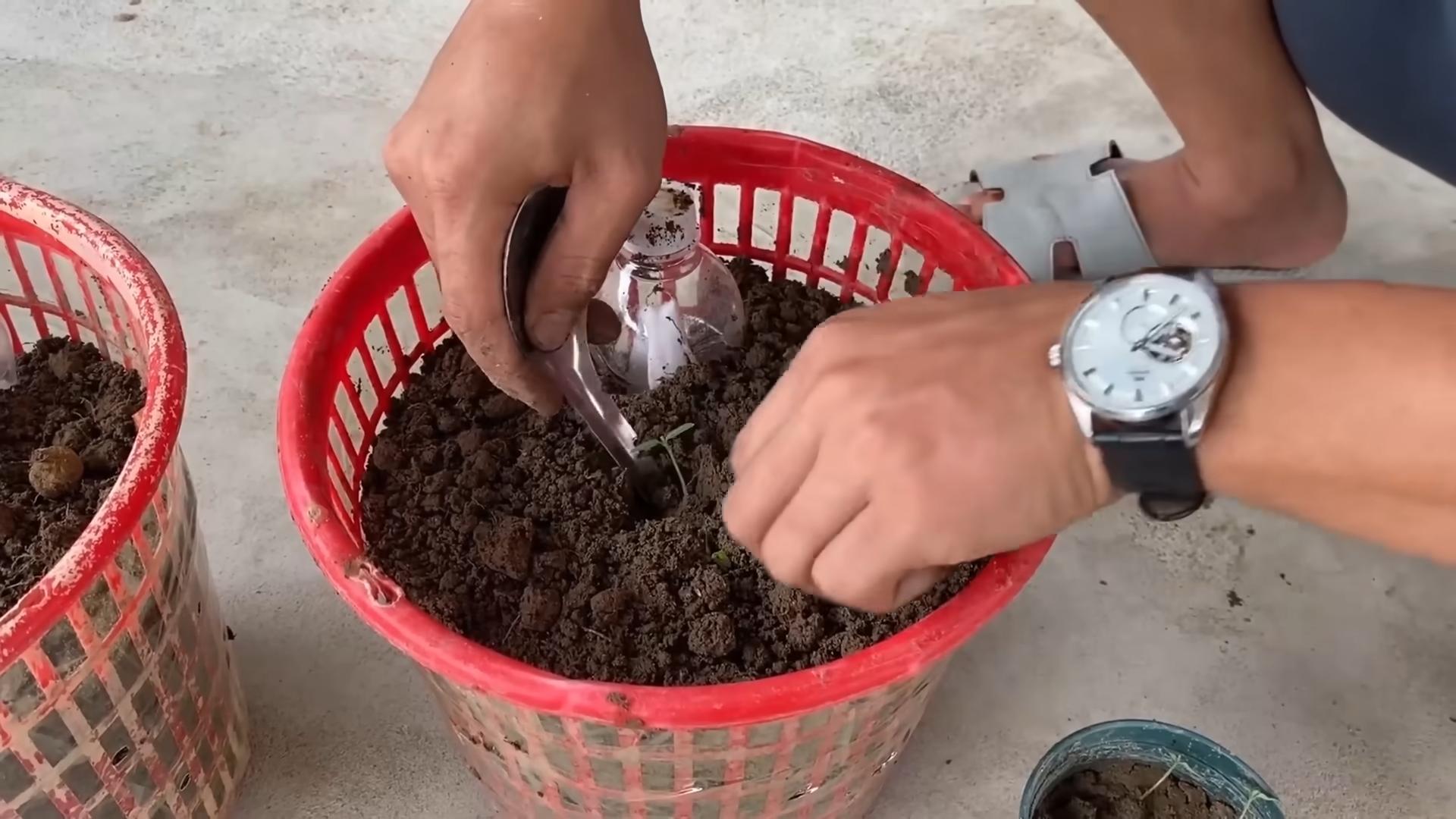
Conclusion
So, there you have it – the revolutionary waterless tomato growing method! We’ve explored how you can cultivate juicy, flavorful tomatoes with significantly reduced water consumption, a boon for both your garden and the environment. This isn’t just a gardening fad; it’s a sustainable solution that addresses water scarcity while still delivering a bountiful harvest.
Why is this a must-try? Because it’s efficient, eco-friendly, and ultimately, it works! Imagine the satisfaction of harvesting plump, sun-ripened tomatoes knowing you’ve done so with minimal water usage. The concentrated flavors you’ll experience are unlike anything you’ve tasted from store-bought varieties, often bland and watery due to over-irrigation. This method forces the tomato plants to focus their energy on fruit production and flavor development, resulting in a truly superior product.
But the benefits don’t stop there. Waterless tomato growing also reduces the risk of fungal diseases that thrive in overly moist conditions. By keeping the foliage dry, you’re creating a less hospitable environment for common tomato ailments like blight and mildew. This translates to healthier plants and a more abundant yield.
Ready to take your tomato growing to the next level? Here are a few suggestions and variations to consider:
* Experiment with different tomato varieties: While this method works well with most tomato types, some varieties, like Roma or San Marzano, which are naturally drier and more disease-resistant, may thrive even more. Cherry tomatoes are also an excellent choice for beginners.
* Amend your soil: Before planting, enrich your soil with plenty of organic matter, such as compost or well-rotted manure. This will improve drainage and provide essential nutrients for your tomato plants. Consider adding a slow-release fertilizer specifically formulated for tomatoes.
* Mulch, mulch, mulch: A thick layer of mulch around your tomato plants is crucial for retaining moisture in the soil and suppressing weeds. Use organic materials like straw, wood chips, or shredded leaves.
* Consider container gardening: Waterless tomato growing is also well-suited for container gardening. Just be sure to choose a large container with good drainage and use a high-quality potting mix.
* Hydroponic Adaptation: While the core concept is water reduction, consider a modified hydroponic system where nutrient-rich water is delivered directly to the roots in a controlled, minimal manner. This allows for even greater precision in water management.
Don’t be afraid to experiment and adapt the method to suit your specific climate and growing conditions. The key is to observe your plants closely and adjust your watering schedule accordingly. Remember, the goal is to provide just enough water to keep the plants alive and thriving, without overwatering.
We’re confident that you’ll be amazed by the results of waterless tomato growing. It’s a sustainable, efficient, and rewarding way to grow delicious, flavorful tomatoes. So, grab your seeds, prepare your soil, and get ready to experience the joy of a bountiful harvest with minimal water usage.
We encourage you to try this DIY trick and share your experiences with us! Let us know how it works for you, what varieties you’ve tried, and any tips or tricks you’ve discovered along the way. Together, we can revolutionize the way we grow tomatoes and create a more sustainable future for gardening. Share your photos and stories on our social media pages using #WaterlessTomatoes and let’s inspire others to join the movement!
Frequently Asked Questions (FAQ)
What exactly does “waterless” mean in waterless tomato growing? Does it mean I never water the plants at all?
No, “waterless” doesn’t mean zero water. It means significantly reduced water usage compared to traditional tomato growing methods. The goal is to provide just enough water to keep the plants alive and thriving, without overwatering. You’ll still need to water your plants, especially during the initial establishment phase and during periods of extreme heat or drought. The key is to water deeply but infrequently, allowing the soil to dry out between waterings.
How often should I water my tomato plants using this method?
The frequency of watering will depend on several factors, including your climate, soil type, and the size of your plants. As a general rule, water deeply when the top inch or two of soil feels dry to the touch. During the initial establishment phase, you may need to water every few days. Once the plants are established, you can reduce the watering frequency to once a week or even less, depending on the conditions. Always check the soil moisture before watering to avoid overwatering.
What type of soil is best for waterless tomato growing?
Well-draining soil is essential for waterless tomato growing. Heavy clay soils tend to retain too much moisture, which can lead to root rot and other problems. Amend your soil with plenty of organic matter, such as compost or well-rotted manure, to improve drainage and aeration. Sandy soils drain too quickly, so you may need to add some clay or organic matter to help retain moisture. A slightly acidic soil pH of around 6.0 to 6.8 is ideal for tomatoes.
Can I use this method for container-grown tomatoes?
Yes, waterless tomato growing is well-suited for container gardening. Choose a large container with good drainage holes and use a high-quality potting mix. Container-grown tomatoes tend to dry out more quickly than those grown in the ground, so you may need to water them more frequently, especially during hot weather. Be sure to monitor the soil moisture closely and adjust your watering schedule accordingly.
What are the signs of underwatering or overwatering in tomato plants?
Underwatering can cause the leaves to wilt, turn yellow, and eventually drop off. The fruits may also be smaller and less flavorful. Overwatering can lead to root rot, which can cause the leaves to turn yellow and droop. The fruits may also crack or develop blossom end rot. If you suspect that you’re underwatering or overwatering, adjust your watering schedule accordingly.
Will this method work in all climates?
Waterless tomato growing can be adapted to most climates, but it may require some adjustments depending on your specific conditions. In hot, dry climates, you may need to water more frequently and provide shade during the hottest part of the day. In cooler, wetter climates, you may need to improve drainage and protect the plants from excessive rainfall.
What about fertilizer? How does that work with reduced watering?
Fertilizing is still important, even with reduced watering. Use a slow-release fertilizer specifically formulated for tomatoes. Incorporate it into the soil at planting time and then side-dress the plants with additional fertilizer every few weeks during the growing season. You can also use a liquid fertilizer diluted in water, but be careful not to over-fertilize, as this can lead to nutrient imbalances.
Does this method affect the taste of the tomatoes?
Yes, in most cases, it enhances the taste! By reducing the amount of water the plants receive, you’re forcing them to concentrate their energy on fruit production and flavor development. This results in tomatoes that are more intensely flavored and less watery.
What if I see blossom end rot? Does this method increase the risk?
Blossom end rot is caused by a calcium deficiency, which can be exacerbated by inconsistent watering. While waterless tomato growing aims to reduce water, it’s crucial to maintain consistent soil moisture levels. Mulching helps with this. If you see blossom end rot, consider adding calcium to the soil or using a calcium foliar spray. Ensure consistent watering practices to aid calcium uptake.
Can I use rainwater harvesting to supplement my waterless tomato growing efforts?
Absolutely! Rainwater harvesting is an excellent way to conserve water and provide your tomato plants with a natural source of hydration. Collect rainwater in barrels or tanks and use it to water your plants as needed. Rainwater is naturally soft and free of chemicals, making it ideal for gardening.
Is this method suitable for all tomato varieties?
While most tomato varieties can benefit from reduced watering, some are better suited for this method than others. Drought-tolerant varieties like Roma, San Marzano, and cherry tomatoes tend to thrive with less water. Experiment with different varieties to see which ones perform best in your garden.
How does mulching help with waterless tomato growing?
Mulch acts as a barrier, reducing evaporation from the soil surface. This helps retain moisture, keeping the soil consistently moist even with less frequent watering. Organic mulches like straw, wood chips, or shredded leaves also decompose over time, adding nutrients to the soil and improving its structure.
What are the long-term benefits of waterless tomato growing?
The long-term benefits include reduced water consumption, healthier plants, more flavorful tomatoes, and a more sustainable gardening practice. By adopting this method, you’re contributing to water conservation efforts and reducing your environmental impact. You’ll also enjoy a more rewarding gardening experience with a bountiful harvest of delicious, homegrown tomatoes.

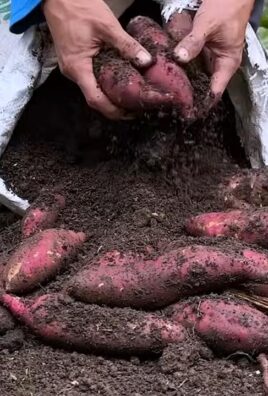
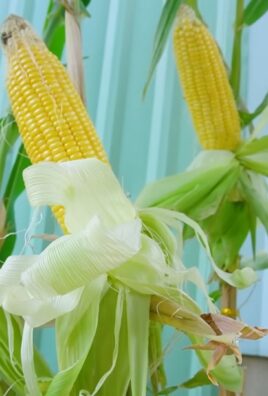
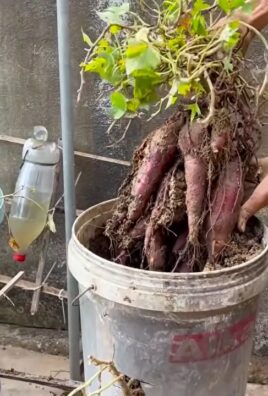
Leave a Comment